How to Navigate the Nameservers Tab in Account Manager
Nameservers point to where the Zone Files for a domain are managed. Zone Files (such as A records, MX records, and CNAME records) direct where parts of a domain point to (such as website, email, etc.). Where name servers for a domain are directed can be changed only with the registrar where the domain is currently registered. By default, domains registered with us are pointed at the designated name server for that brand.
What are Nameservers
A nameserver, also known as a “DNS name server,” translates human-friendly domain names into IP addresses. It acts as a directory, guiding computers, tablets, and other devices to the correct location within the Domain Name System (DNS). By responding to queries, nameservers ensure that users can easily access websites using familiar domain names instead of complex numerical addresses.
Any server with DNS software can work as a caching nameserver. However, people usually use the term to refer to servers run by hosting providers. These servers handle and manage domain names for their clients. They make sure that:
- Website names are linked to IP addresses in the right way, helping to send traffic to the correct web server.
- DNS questions are answered quickly, which is important for the speed and dependability of getting to websites.
- Knowing this role is important for managing website operations. It is especially true when setting up your site’s settings. This helps ensure your site is available and works well on the internet.
How to Change Your Nameservers
- Log in to your Bluehost Account Manager.
- In the left-hand menu, click Domains.
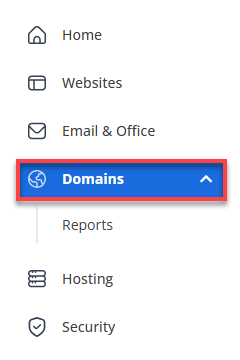
- If you have one domain in your account, you will be taken directly to the domain management panel.
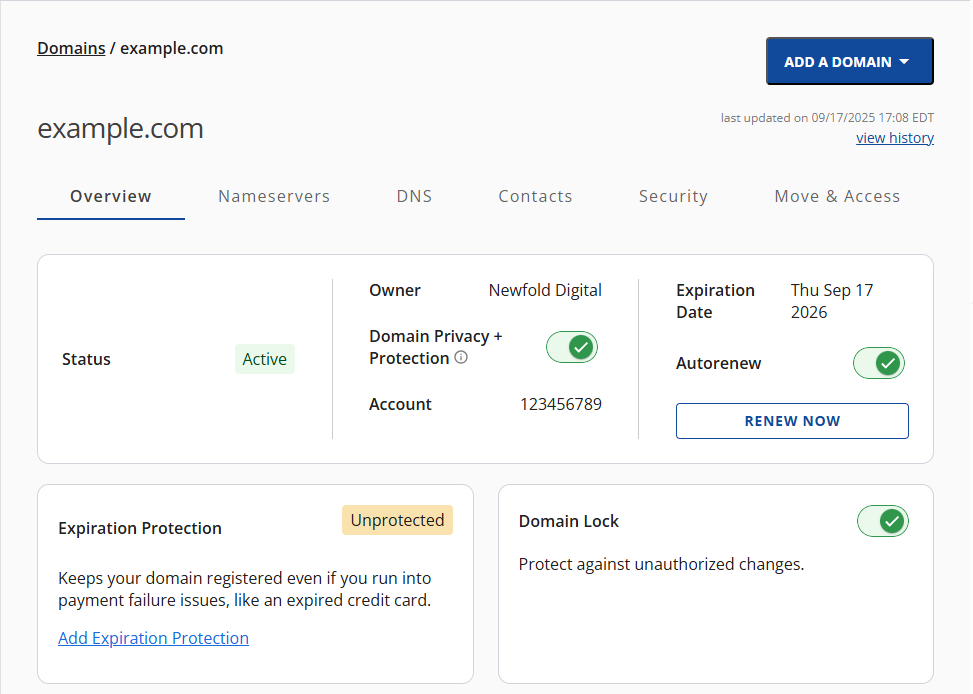
- If you have multiple domains in your account, click the domain you wish to manage to access the domain management panel.
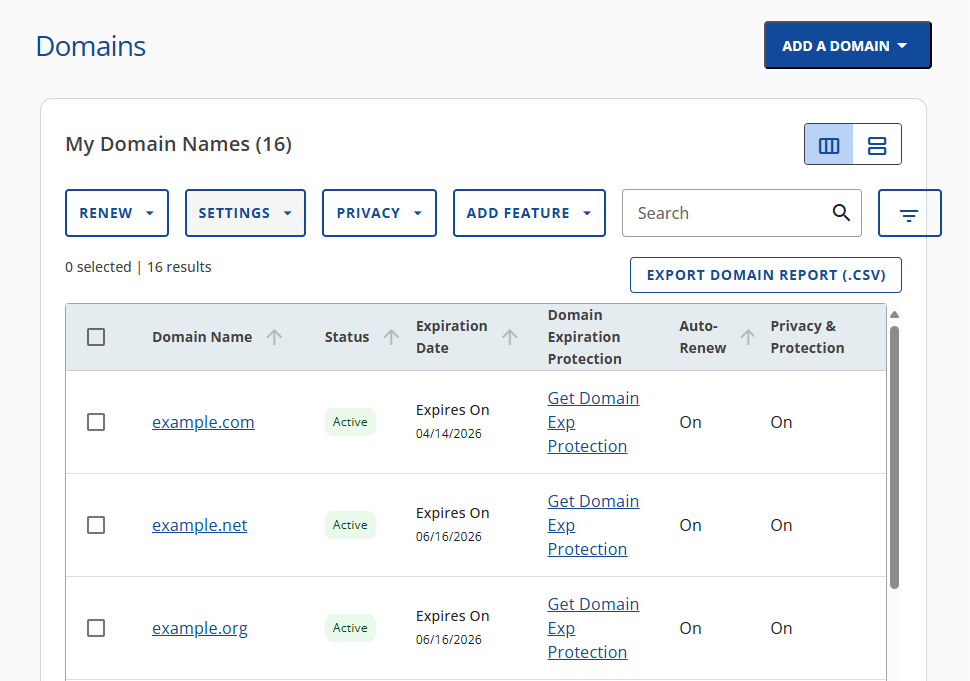
- If you have one domain in your account, you will be taken directly to the domain management panel.
- Select Nameservers from the horizontal menu.
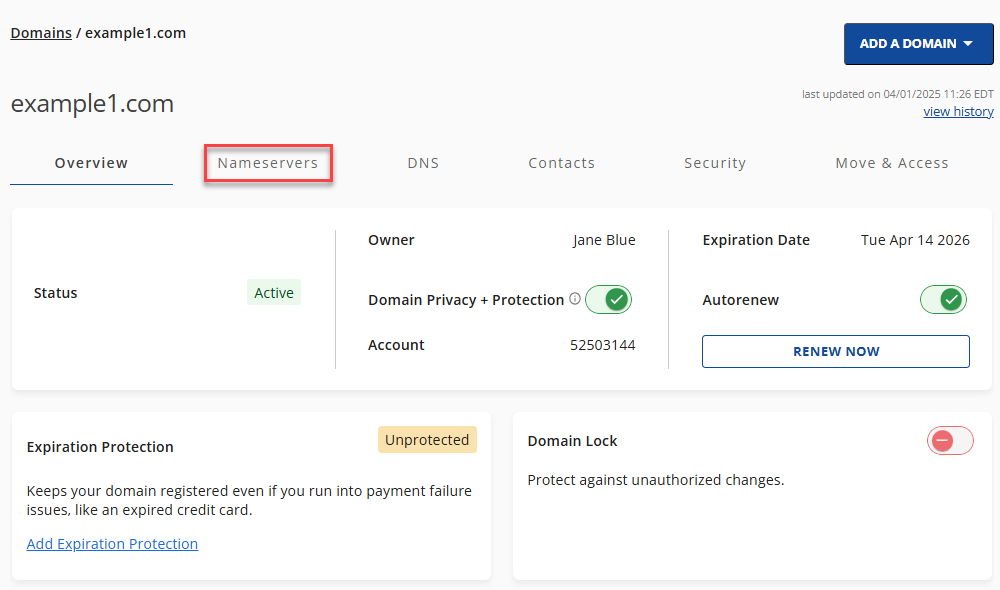
- In the Nameservers section, click the CHANGE NAMESERVERS button.
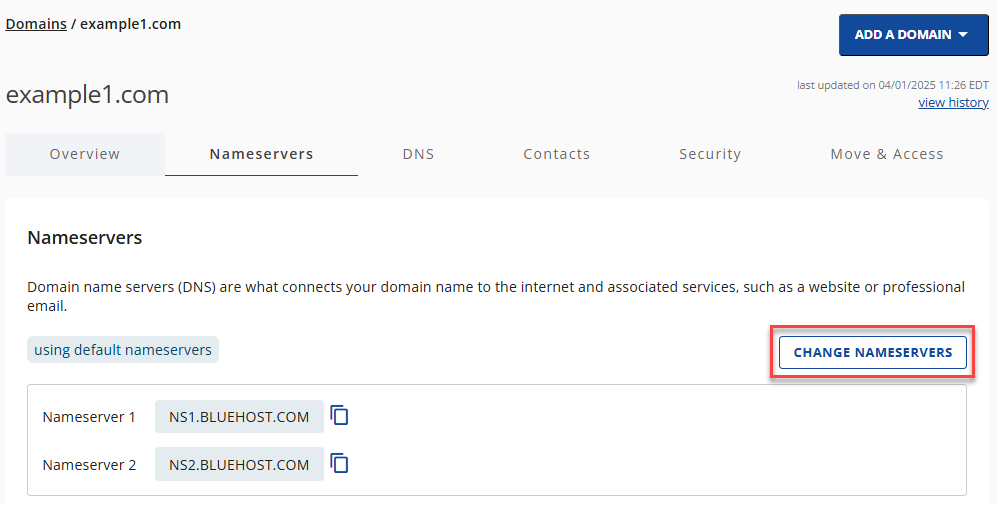
- Input the new Nameservers.
- Click the Save button to ensure that any changes you have made are saved.
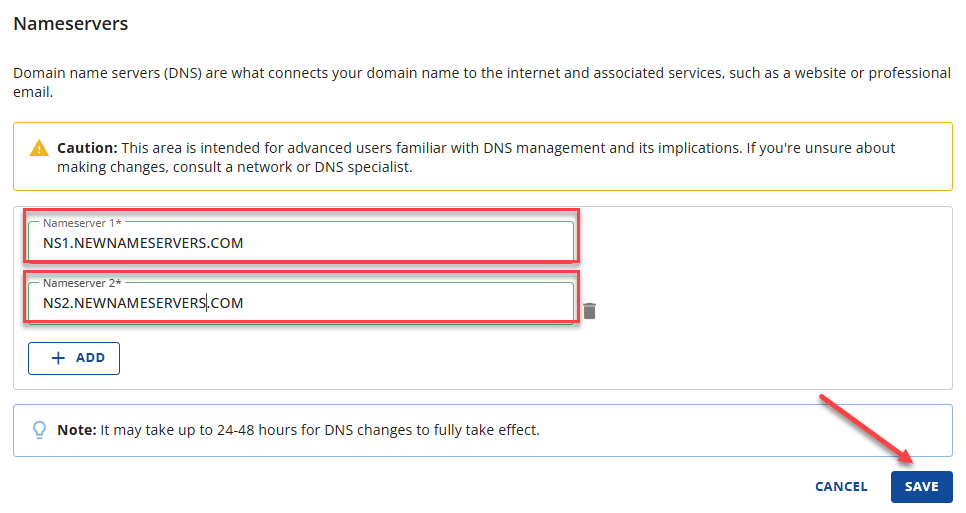
What are the default Nameservers for Bluehost
Bluehost Default Nameservers:
- ns1.bluehost.com
- ns2.bluehost.com
What are Custom Nameservers
Custom nameservers (also called private or child nameservers) are DNS servers that are associated with a specific domain instead of the default nameservers provided by your hosting provider.
Benefits of Using Private Nameservers:
- Branding: Using your own nameservers allows you to create a more professional and branded look for your website, using your domain name in the nameserver name.
- Flexibility: If you decide to switch hosting providers, you only need to update the IP addresses of your nameservers, rather than changing the nameservers for each domain.
- Control: You have more control over your DNS records, allowing you to manage special settings that might not be available with regular hosting nameservers.
- Privacy and Security: Your domains won't directly link to your hosting provider's public nameservers, offering more privacy and potentially improving security by reducing the need for third-party DNS services.
- Easier for Clients: If you run several websites or offer hosting services, a private nameserver makes it easier for clients to connect their domain to your brand.
How to Create Custom Nameservers
- Log in to your Bluehost Account Manager.
- In the left-hand menu, click Domains.

- If you have one domain in your account, you will be taken directly to the domain management panel.

- If you have multiple domains in your account, click the domain you wish to manage to access the domain management panel.

- If you have one domain in your account, you will be taken directly to the domain management panel.
- Select Nameservers from the horizontal menu.

- At the bottom part of the Nameservers page, locate the Custom Nameservers section and click the +ADD button.

- A pop-up window will appear for you to input the details of your custom nameservers.
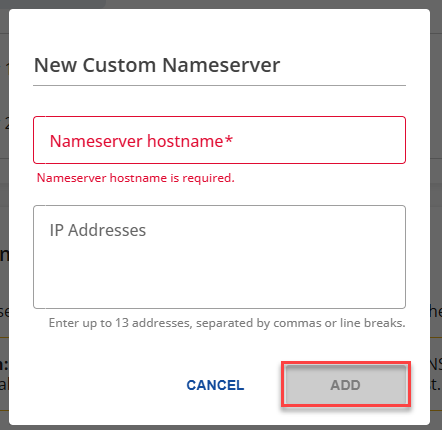
- Once the details are added, click the ADD button to complete the process.

- A confirmation banner will appear at the top once the new custom nameservers are added properly.

Summary
Nameservers translate domain names into IP addresses, directing internet traffic to the correct locations. They manage Zone Files (like A records, MX records, and CNAME records) for websites and emails. You can change nameservers only through the domain's registrar. Bluehost's default nameservers are ns1.bluehost.com and ns2.bluehost.com. Custom nameservers offer benefits like branding, flexibility, control, privacy, and ease for clients. To change or create nameservers, log into your account, navigate to Domains, select your domain, and update the nameservers. Changes may take 24-48 hours to propagate.
If you need further assistance, feel free to contact us via Chat or Phone:
- Chat Support - While on our website, you should see a CHAT bubble in the bottom right-hand corner of the page. Click anywhere on the bubble to begin a chat session.
- Phone Support -
- US: 888-401-4678
- International: +1 801-765-9400
You may also refer to our Knowledge Base articles to help answer common questions and guide you through various setup, configuration, and troubleshooting steps.